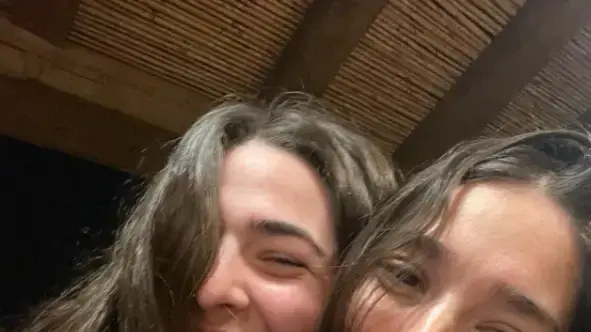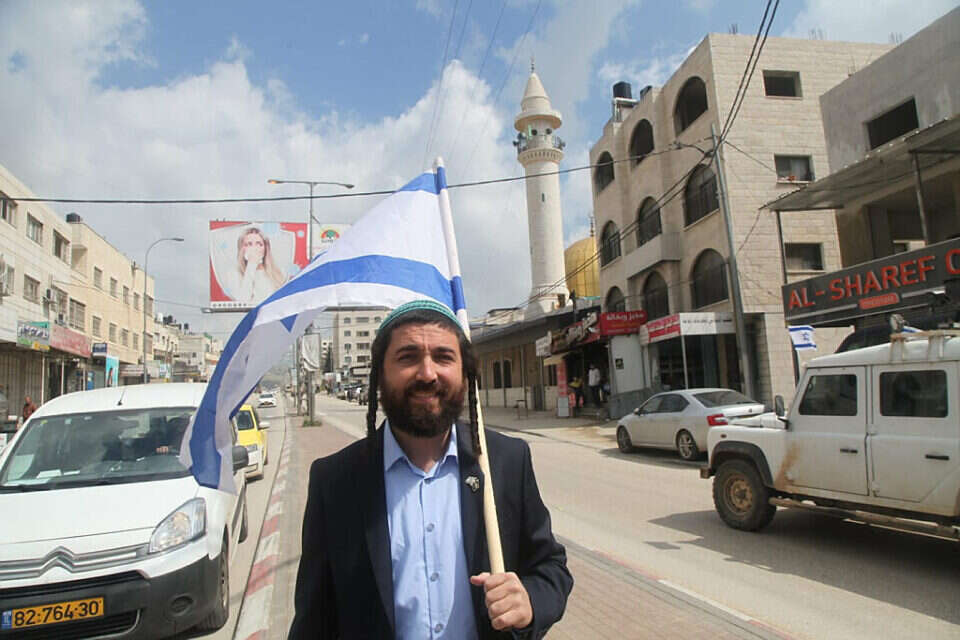Enlarge image
Image by Yael Martinez: "I saw death as well as life"
Photo: Yael Martinez / Magnum Photos
The Magnum agency is celebrating its 75th birthday at the Berlin Photo Week from September 2nd to 9th, with a selection of photos from the agency's history, among other things. DER SPIEGEL is this year's cooperation partner and in this capacity is organizing a series of talks with Magnum photographers on Saturday, September 3rd. Here three of them talk about the picture of their lives.
"The violence stays indoors" - Yael Martinez, Mexico
In the last year alone, almost 100,000 people disappeared in Mexico and never appear again, or in mass graves.
I live in the city of Taxco, about a four hour drive from Mexico City.
In 2013 we lost three family members - all brothers-in-law of mine and all only between 18 and 23 years old.
One of them was a police officer, another was involved in drugs.
The two disappeared without a trace.
The third had to go to jail after being caught with drugs and guns earlier.
He hanged himself in custody.
The photo shows my little daughter and me.
When I wanted to take her to kindergarten one day, she seemed very upset.
I asked her what was going on.
She replied that she had a nightmare in which she fell into a dark hole and no one caught her.
I realized that all the violence we were surrounded by was affecting my daughter as well.
I asked them to recreate the same image and feeling of the dream together - only in this scenario I was there to catch them.
I set up a tripod, threw her up and asked her to move in such a way that the shadow she projected on the wall looked like that of a hanged man.
It took us about ten attempts.
My daughter enjoyed the moment.
At the same time I saw death as well as life.
For me, the moment was a ritual to change the narrative in my child's memory.
I tried to visit and take photos of other families whose loved ones also disappeared.
I began to understand their reality as well.
When someone disappears, the violence stays at home.
She stays forever.
I called my project »La casa que sangra«, »The house that bleeds«.
»I find this picture somehow disturbing« – Bieke Depoorter, Netherlands
I don't really like this picture, I find it kind of disturbing.
It features Agata Kay, an artist, writer and former sex worker, and a hairdresser whom we met on the street in Beirut on a trip together.
He wasn't Kay's suitor - just some guy.
After we drank some whiskey, he invited us to his apartment so that we could take a closer look at our haircuts.
Immediately, the two started making out.
As a photographer, when you go to a place where something is happening, you have to make a quick decision.
When I entered the bedroom, I immediately stood in the corner behind the bed.
Maybe I wanted to be as far away from the action as possible, maybe I did it for strategic reasons.
I was excited and intrigued by the situation.
It was also a very uncomfortable moment because I wasn't sure if they were just doing it for me or if they really wanted to.
The man's sexual appetite repelled me.
I was confused by Kay looking into the camera and asking me, "Do you have the picture?"
The picture is part of my book »Agata«.
I met her in a strip bar in Paris in 2017 and from then on we started working together.
I thought I would only take one picture of her, but there was this creative energy and tension between us.
In the end we worked together for three years, and a large project about representation, my responsibility as a photographer, about borders and crossing them, about sexuality and truth emerged.
At the same time we wanted to find Kay's identity together.
At first I wanted to hide the fact that she was a sex worker.
I wanted to show who she really is, but Agata was just disappointed in the fact that I didn't want to portray that part of her.
The moment captured in the picture made me think about the role of photography.
Which story do I want to tell and which one the photographed?
Why I don't like this picture may also have something to do with guilt.
Maybe Kay did something because she thought I wanted to see it?
We left Beirut pretty much the next day.
Soon after, we exhibited our paintings for the first time.
»The insects attack in swarms« – Nanna Heitmann, Germany
Located in Russian Siberia, Yakutia is considered one of the coldest places on earth.
In winter there are record temperatures of minus 60 degrees Celsius.
Last year, however, bad forest fires raged there.
With daytime temperatures of up to 38 degrees, it was one of the hottest summers ever seen in an arctic region.
I was there for a sponsored stay, accompanying firefighters and civilians on their missions with a reporter from the New York Times.
In the picture you can see a Yakut.
At night we left a village near the capital Yakutsk with several people and drove to a forest fire.
The man is standing on a truck and filling the truck's extinguishing tank with water from a lake.
Under normal circumstances, the ground beneath the forests is permafrost that never fully thaws.
Thousands of small lakes and ponds formed due to climate change.
The forest fires exacerbated this phenomenon.
The firefighter collects the water in one of these molten pools.
He doesn't wear his clothes because it's cold, but to protect himself from mosquitoes.
Otherwise, the insects crawl everywhere and attack in swarms.
At the same time, there are many dragonflies trying to catch these mosquitoes.
The fires are mostly extinguished at night when you can see the fire obscured by smoke during the day.
People say: "The fire sleeps".
They often go to the fire sites on foot and try to contain the fire with backpacks loaded with water.
In Yakutia at that time there was dissatisfaction with the way the authorities were dealing with the forest fires.
Russia had sent fire-fighting planes to Turkey and to the fires there, while many volunteers went through the forest in Yakutia.
After the media attention, the situation changed and the government sent fire-fighting planes.
Minutes: Benjamin Stolz









